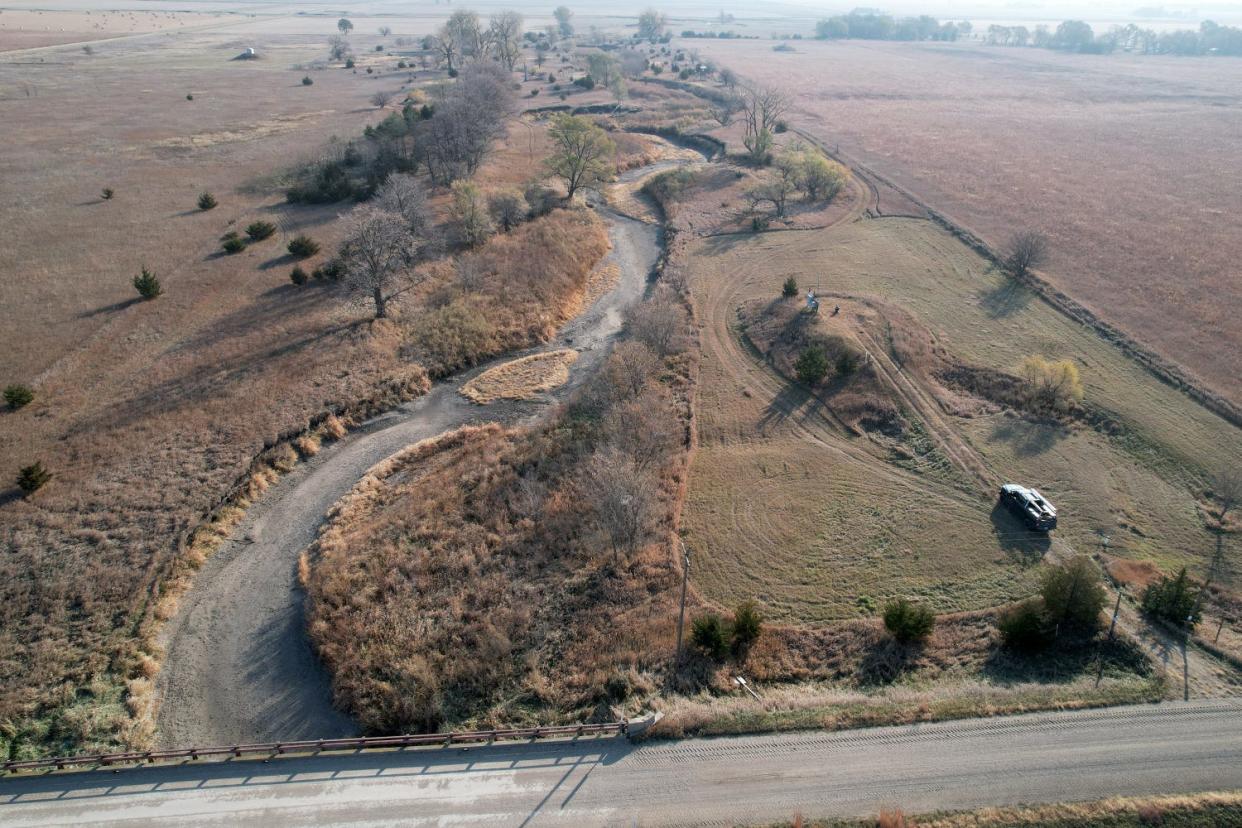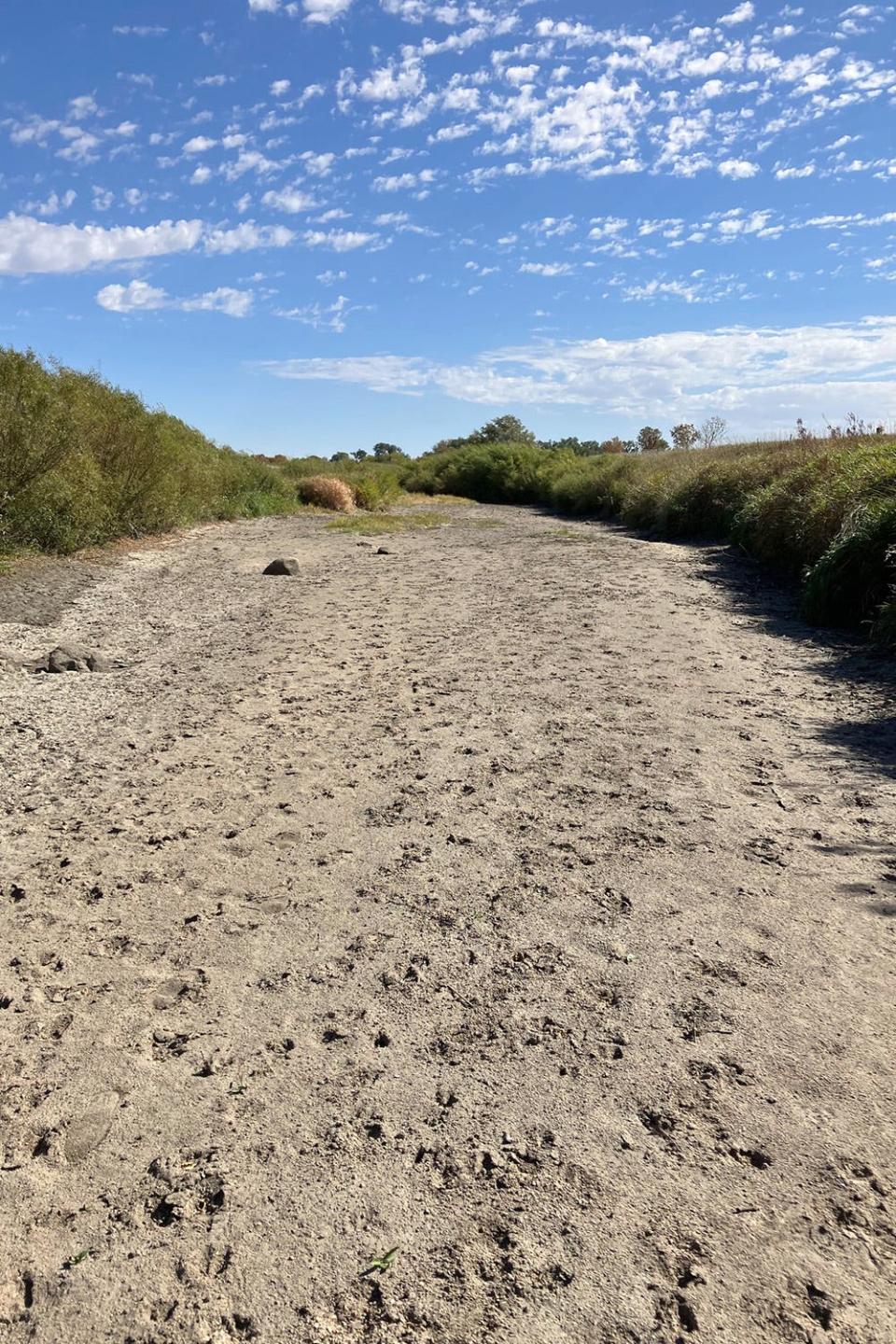Iowa river dries up as water pumped to Minnesota

A significant stretch of a northwest Iowa river has run dry several times in the past seven years as a rural water utility has pumped more water from the ground — at least a quarter of which is sold out-of-state — with the approval of state regulators.
The 2-mile segment of the Ocheyedan River dried up this September amid drought conditions and increased pumping by Osceola County and the Osceola County Rural Water System, according to the Iowa Department of Natural Resources.
That led to the deaths of an undetermined, large number of fish and other aquatic life, diminished wildlife in the area and left less water for local livestock.
More:Ruth McCabe, the 'cover crop whisperer,' is spreading the gospel of conservation to Iowa farmers
The Ocheyedan River runs for about 60 miles from Ocheda Lake in far southern Minnesota to Spencer in Iowa, where it joins the Little Sioux River. A segment of the river about 4 miles south of Ocheyedan has run dry at least four times since 2015.
“It’s surreal,” said Ed Jones, who owns 90 acres of pasture land that abuts the river. “There’s no water. There’s no mud. There’s no nothing. It’s just gravel.”
Jones said the DNR — which oversees the state’s water-use permits — has been slow to remedy the ongoing problem. State law says a permit for the large-scale withdrawal of water from the ground shall be denied or discontinued “if it will impair the navigability of any navigable watercourse” or “if it will unreasonably impair the long-term availability of water.”
Jones, an Osceola County supervisor, said the situation is especially egregious because so much of the water pumped from the ground by the rural water utility is sold for use in Minnesota.
A northeast Iowa company abandoned its proposal last year to withdraw billions of gallons of water annually from the Jordan Aquifer — which lies beneath nearly all of Iowa — and ship it by rail to western states. The idea drew widespread criticism and was rejected by the DNR because it didn’t meet a “beneficial use” requirement under state law.
DNR takes action
In November, the DNR sent letters to the Osceola County Rural Water System and Osceola County — which periodically pumps water from a quarry near the Ocheyedan river to excavate rock from it — that asked them to develop plans to help prevent the river from running dry again.
Osceola County Engineer Keith Brann said the county will confine its dewatering of the quarry to wetter months of the spring in future years. The work has the effect of lowering the water table in the area and affects flows of the river, the DNR has determined. The county typically dewaters the quarry once every several years.
It’s unclear what plan the rural water utility is developing. It draws water from relatively shallow wells near the river, three of which the DNR determined have a direct impact on river flows.
Doug Westerman, the general manager of the Osceola County Rural Water System, declined to comment for this article.
Jason Overby, manager of Lincoln Pipestone Rural Water — the Minnesota utility that buys water from the Iowa utility — said he had not been notified of the situation.
“That would be a big concern,” he said. “We do buy a good volume of water from our neighboring district in Iowa. We’ve invested heavily in the infrastructure there.”
Also in November, the U.S. Army Corps of Engineers released a public notice that Osceola County Rural Water System wants to construct a dam in the Ocheyedan River to artificially elevate its surface level in the area that went dry this year. It was unclear in the letter how that might affect the river downstream.
“The purpose of this project is to increase drought resiliency for the alluvial aquifer that supplies drinking water to the local populace,” the letter said.
The water utility serves about 5,900 people, according to state records.
State doesn’t track out-of-state water sales
The Osceola County utility is among nine in Iowa that sell water across state lines, according to DNR records.
The Rathbun Regional Water Association, based in Centerville in south central Iowa, sells water to five other utilities across the state border in Missouri. Three Iowa utilities buy water from out-of-state sources in Nebraska and South Dakota.

The state does not require utilities to report the amount of water they sell for use in other states. Mark Moeller, the DNR’s Water Supply Engineering supervisor, said his department does not have the authority to require such reports.
“I think that would probably have to be a law change,” he said.
But documents associated with an Osceola County Rural Water System request to increase the amount of water it is allowed to withdraw from the ground show that it has agreed to sell about 440 million gallons of water annually to the Minnesota utility.
That means up to 38% of what the utility has pumped in Iowa in recent years is piped to Minnesota, based on water usage data documented by the state.
The water utility has a total of 20 wells. Two of them are deep — roughly 550 and 600 feet — and draw water from the Dakota aquifer. The other 18 are Ocheyedan River alluvial aquifer wells that range in depth from 36 to 59 feet.
The utility’s water usage has more than quadrupled in the past 30 years, state records show. In 1993, it pumped about 330 million gallons. In recent years, the utility has been pumping between 1.1 billion and 1.5 billion gallons annually.
More:'Great Wolf Lodge on steroids': Giant indoor water park proposed for West Des Moines
Its current permit allows the utility to pump up to 2.25 billion gallons each year.
That permit — issued in April 2021 — includes requirements to monitor the stream flow of the Ocheyedan River. The utility is required to take photos of the river and document the daily pumping rates of wells near the river if its flow slows to 15 cubic feet per second, based on U.S. Geological Survey monitoring downstream of the current dry segment of the river.
Those requirements were a result of the river running dry in recent years, Moeller said.
In 2021, the stream flow dropped below that threshold in July and didn’t regain sufficient flow until late September. That period coincided with a segment of the river drying out. In August 2021, the river’s flow was as low as about 2 cubic feet per second.
The county did not dewater its quarry in 2021.
Previously:Shrinking Mississippi River slows, grounds barges, lowers revenue for Iowa farmers
This year, flow dipped below 15 cubic feet per second in September, when the river dried out again. It reached a low of about 5 cubic feet per second in October but recovered above the monitoring threshold in November.
Still, there is a dry segment of river, Jones said.
“How long does it have to go on like this?” he said.
The Osceola County Rural Water System has a deadline of March 31, 2023, to submit a plan to potentially reduce its pumping rates when river levels are low.
If it doesn’t, “the DNR may unilaterally proceed with other actions to protect the use of the water supply,” according to the letter the department sent to the utility in November.
Find this story at Iowa Capital Dispatch, which is part of States Newsroom, a network of news bureaus supported by grants and a coalition of donors as a 501c(3) public charity. Iowa Capital Dispatch maintains editorial independence. Contact Editor Kathie Obradovich for questions: kobradovich@iowacapitaldispatch.com.
This article originally appeared on Des Moines Register: Section of Iowa river goes dry as water pumped to Minnesota customers

